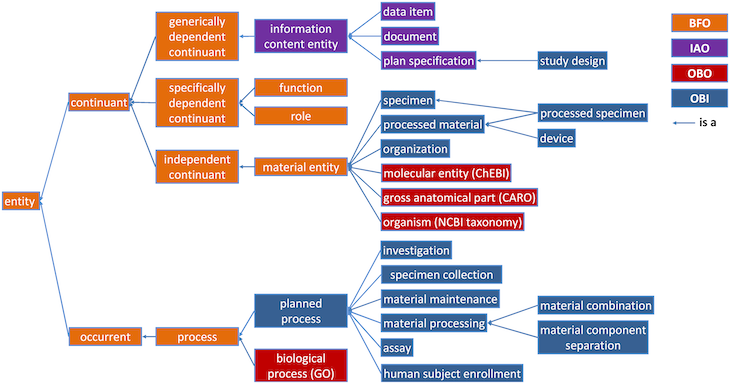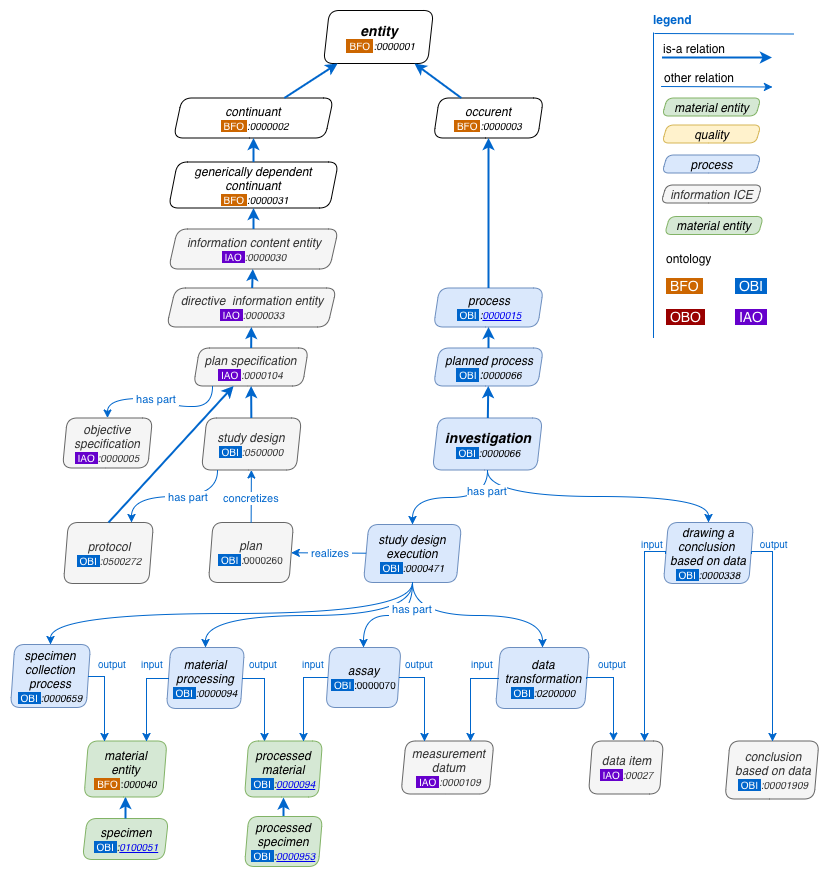Core Classes
The top-level organization of the main classes of the ontology conforms to the Basic Formal Ontology (BFO) upper ontology as shown in the following figure:

This provides a basic model for how OBI structures a theoretical description of experimental methodology. Although this view is quite complicated, much of the design of OBI revolves round four classes: (A) planned process
(B) plan specification, (C) material entity, and (D) information content entity.
OBI’s scheme for generating linked data that describe experiments (at least down to the protocol level) is illustrated in the following figure:

Any planned process can specify substructure through the has part object property. Usually an investigation is the focus of our interest, and is linked to a study design execution that may then be made up of individuals made from three classes of processes that are used in scientific protocols: material processing, assay, and information content entity.
We then use the has specified input and has specified output object properties to link these processes to either material entity or data item objects to describe a complete experimental scientific protocol. The actual values of data elements in OBI are mainly provided by instances of a handful of data properties, or by way of the value specification class. We may also specify the conclusions of a study through the drawing a conclusion based on data process which generates a conclusion based on data. Additional semantics are invoked to instantiate these models for real data, but these core classes provide the basic structure for such descriptions.